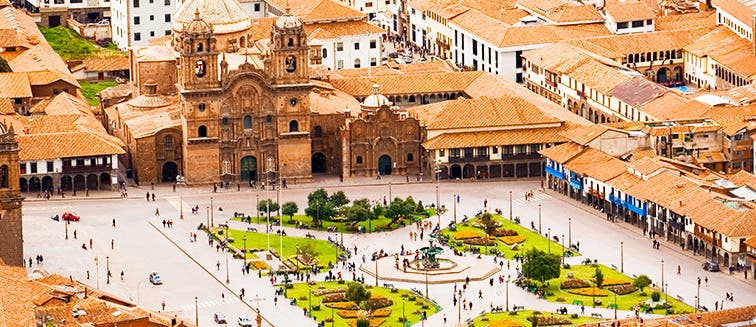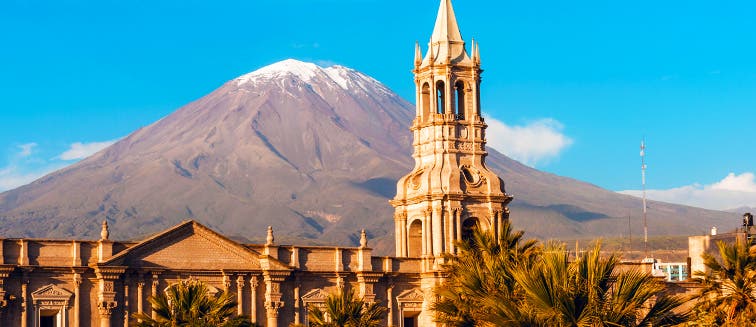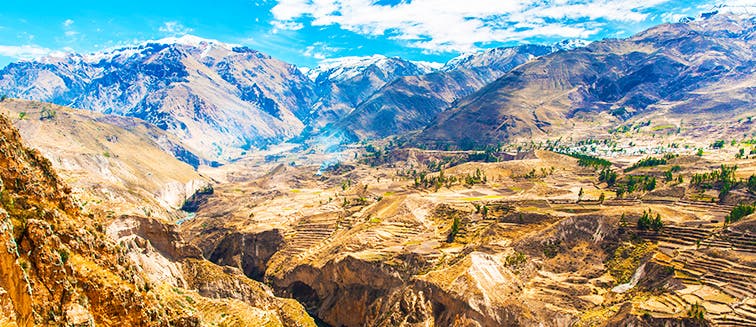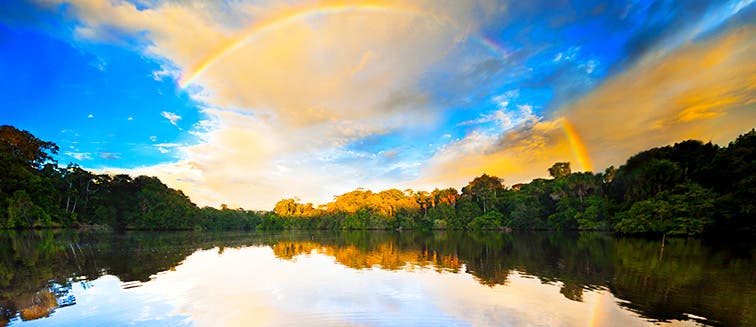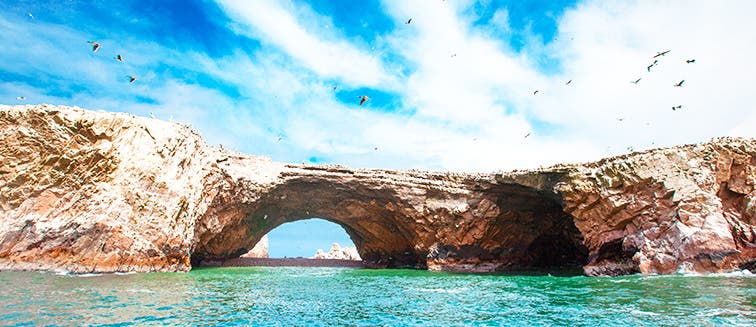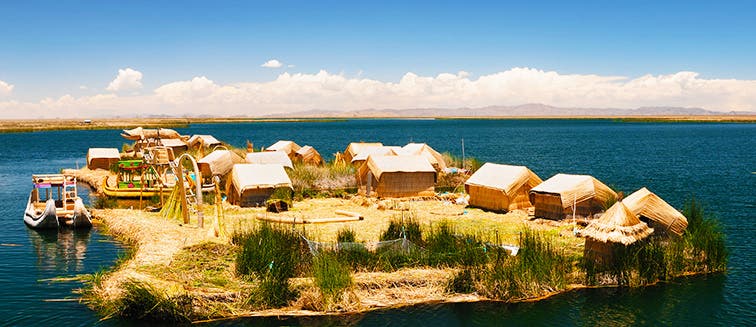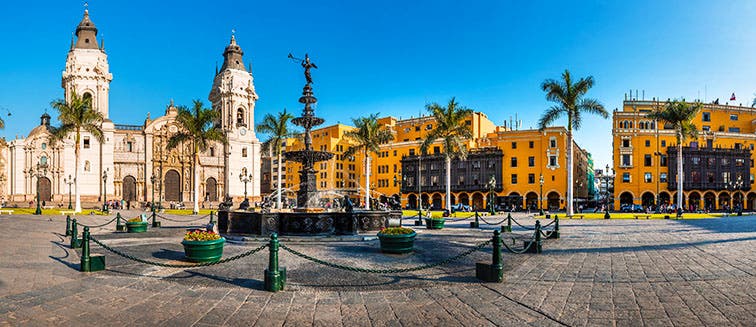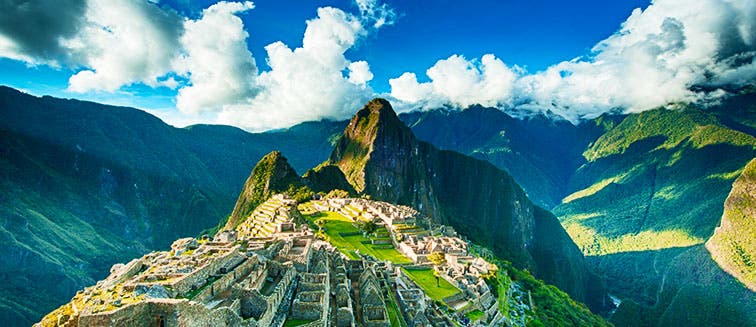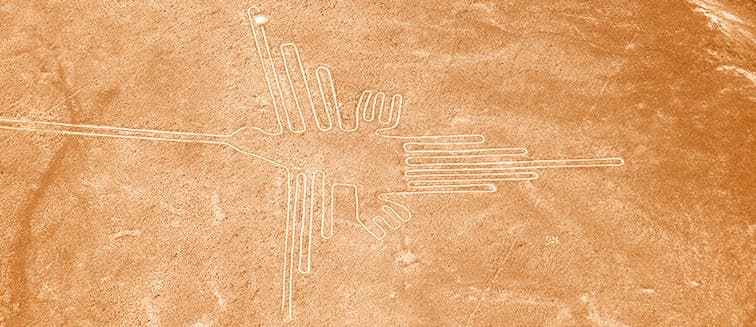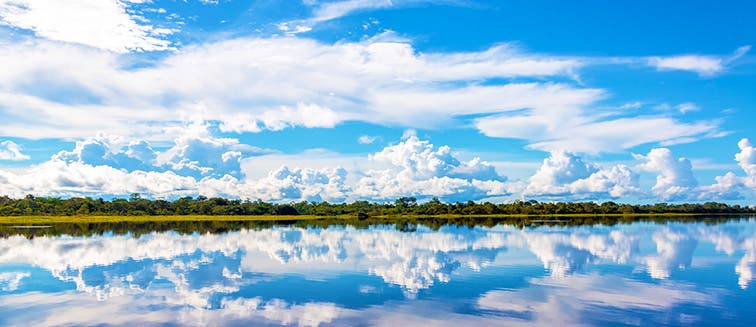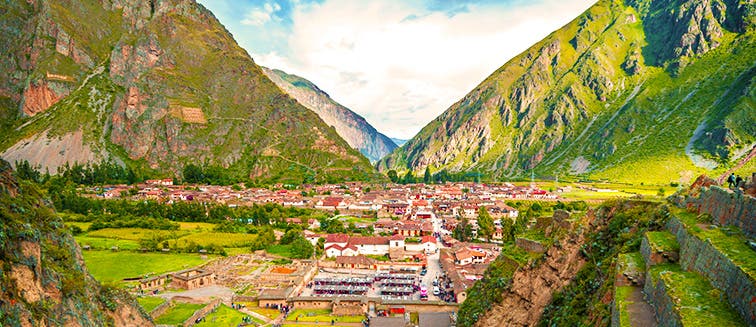Africa
Americas
Asia
Europe
Oceania
By Season
By Interest
By Group
What to see in Peru
Cusco
Tourist attractions Cusco
Ancient Incan capital conquered by Pizarro, Cusco today is an active city of colonial buildings surrounded by reminders of this splendid civilisation. For example, the Santo Domingo cathedral is built on the stone of the Incan Casas del Sol, some of the walls are even still visible. This is the classic departure point for trips to Machu Picchu.
What to see in Cuzco
You may be passing through Cuzco because you want to see Machu Pichu. However, at Exoticca we recommend that you pay attention to the city as well. This is a place with a wealth of history and great beauty. There is a reason it was the capital of the Inca Empire and a strategic hub during the Spanish colonial period. The combination of both cultures is a feature that will provide a constant source of delight.
Travel to Cuzco and discover its heart: Plaza de Armas
When you see the Plaza de Armas for the first time, it won't occur to you that it was originally a swamp. The Incas installed drainage, dried it out and made it their administrative centre. The Spanish colonisers built their churches and buildings on top of former palaces and today it is a place to have coffee.
The Cathedral and the Church of the Society of Jesus are outstanding places to visit. The latter was built in a beautiful baroque style and houses a golden pulpit and four cedar altars.
San Blas district
The city's oldest church is the one that gives its name to one of its most charming districts. San Blas is a place to lose yourself amid steep cobbled streets full of interesting nooks and crannies. Don't miss the colonial-era buildings and take advantage of the walk to buy your Cuzco souvenirs here. If possible, in one of the craft workshops. When you reach the highest part of the district you'll be able to soak up one of the city's most beautiful views. And, if it gets late and you are in San Blas after dark, take advantage and have a pisco sour cocktail.
Calle Loreto and the twelve-angled stone
Calle Loreto is one of those places where the contrast between the pre-Columbian Inca culture and the colonial culture is best appreciated. The lower sections of the buildings consist of walls of Inca origin, yet they support buildings of colonial architecture.
The best known place in Cuzco meanwhile is the twelve-angled stone, very near Calle Loreto. You'll find it in Calle Hatun. This stone is remarkable for its workmanship.
San Pedro Market
The developer of the most famous structure in Paris, the Eiffel Tower, also built the Mercado de San Pedro, or Central Market of Cuzco. Inside, you can buy Peruvian food and local handicrafts. We recommend that you try the fruit: it's absolutely delicious.
The temple of Qorikancha
The temple of Qorikancha is an Inca construction dedicated to the sun god, and at one time it was the most important place of worship of the Inca civilization. Its enormous blocks of rock, which are joined together without the use of mortar, have been preserved. In the past, they formed walls covered with sheets of gold that marked the limits of the enclosures of the various buildings of the complex, since the temple of Qorikancha was not a single building, but a real religious complex that housed the temple of the stars, the moon and, of course, the sun.
Sacsayhuamán
To reach the ruins of the Sacsayhuamán fortress, one must walk about forty minutes to the north of the city. It's well worth the walk. In fact, it would be unforgivable to travel to Cuzco and not visit this complex, which dates back to the 15th century, when Pachacutec commissioned its construction. The three superimposed platforms, made up of gigantic blocks of stones similar to those of Qorikancha, have been preserved to this day. They exhibit images carved by the Incas
Don't miss the Sun Gate.
Tambomachay, Pukapukara, Qenqo and the White Christ
No list of archaeological sites would be complete without mentioning Tambomachay, Pukapukara and Qenqo. All three of them would be more than enough reason to travel to Cuzco on their own, but we recommend that you don't miss a single one.
Tambomachay, which lies 8 km from the city, is a place where water was worshipped. There is a complex system of aqueducts and canals here. Pukapukara is only a five-minute walk from Tambomachay. It is known as the Red Fortress, and you can still see the remains of the walls and inner quarters. Qenqo is further away. It contains the remains of a religious complex with the ruins of an amphitheatre, an underground hall, a canal and two religious columns.
The White Christ is an 8-metre-high statue near Qenqo. From here you can walk to the centre of Cuzco on a descending walk that will reveal beautiful views of the city.
Our recommendation is that you do the whole route on foot so that you can appreciate the surrounding landscape, but you can also take a bus or combi.
OUR BEST TRIPS TO CUSCO
YOU ALSO LIKE
Tourist attractions peru
Points of interests
- Trips to Aguas Calientes
- Trips to Arequipa
- Trips to Colca Canyon
- Trips to Cusco
- Trips to Huacachina Oasis
- Trips to Iquitos
- Trips to Islas Ballestas
- Trips to Lake Titicaca
- Trips to Lima
- Trips to Machu Picchu
- Trips to Nazca
- Trips to Paracas
- Trips to Puerto Maldonado
- Trips to Sacred Valley
Other Points of interests
- Trips to Amazon
- Trips to Argentinian Patagonia
- Trips to Atacama Desert
- Trips to Banos
- Trips to Baquerizo Moreno
- Trips to Bariloche
- Trips to Barrio La Boca
- Trips to Bogota
- Trips to Buenos Aires
- Trips to Buzios
- Trips to Cartagena de Indias
- Trips to Chilean Patagonia
- Trips to Christ the Redeemer
- Trips to Coffee Axis
- Trips to Comuna 13
- Trips to Copacabana Beach
- Trips to Cotopaxi National Park
- Trips to Cuenca
- Trips to Easter Island
- Trips to Eduardo Avaroa
- Trips to El Calafate
- Trips to Galapagos Islands
- Trips to Getsemani
- Trips to Guayaquil
- Trips to Iguazu Falls
- Trips to Iguazu Falls
- Trips to Ilha Grande
- Trips to Isabela Island
- Trips to Islas del Rosario
- Trips to La Candelaria
- Trips to La Loberia Beach
- Trips to La Paz
- Trips to Lake Titicaca
- Trips to Luna Valley
- Trips to Manaus
- Trips to Medellín
- Trips to Mendoza
- Trips to Middle of the World Monument
- Trips to Mindo
- Trips to Otavalo
- Trips to Paraty
- Trips to Perito Moreno
- Trips to Potosi & Cerro Rico
- Trips to Praia do Forte
- Trips to Puerto Natales
- Trips to Quilotoa
- Trips to Quito
- Trips to Rapa Nui National Park
- Trips to Reserva Nacional Los Flamencos
- Trips to Rio de Janeiro
- Trips to Riobamba
- Trips to Ruins of Ingapirca
- Trips to Salar de Uyuni
- Trips to Salvador
- Trips to San Andrés
- Trips to San Cristobal Island
- Trips to San Felipe de Barajas Castle
- Trips to San Pedro de Atacama
- Trips to San Rafael Glacier
- Trips to San Telmo
- Trips to Santa Cruz Island
- Trips to Santa Lucía Hill
- Trips to Santa Marta
- Trips to Santiago de Chile
- Trips to São Paulo
- Trips to Serrano & Balmaceda Glaciers
- Trips to Sucre
- Trips to Tayrona
- Trips to The Devil's Nose
- Trips to Tiahuanaco Ruins
- Trips to Torres del Paine National Park
- Trips to Ushuaia
- Trips to Valley of the Moon
- Trips to Valparaiso
- Trips to Vicente Perez Rosales National Park
- Trips to Viña del Mar
Countries Nearby
- Argentina Trips
- Bahamas Trips
- Belize Trips
- Bolivia Trips
- Brazil Trips
- Canada Trips
- Chile Trips
- Colombia Trips
- Costa Rica Trips
- Dominican Republic Trips
- Ecuador Trips
- El Salvador Trips
- Guatemala Trips
- Honduras Trips
- Mexico Trips
- Panama Trips
- Peru Trips
- United States Trips
Trip Styles
Subscribe to our newsletter and join Exoticca GO
The best travel deals
Exclusive promotions
Expert travel tips
